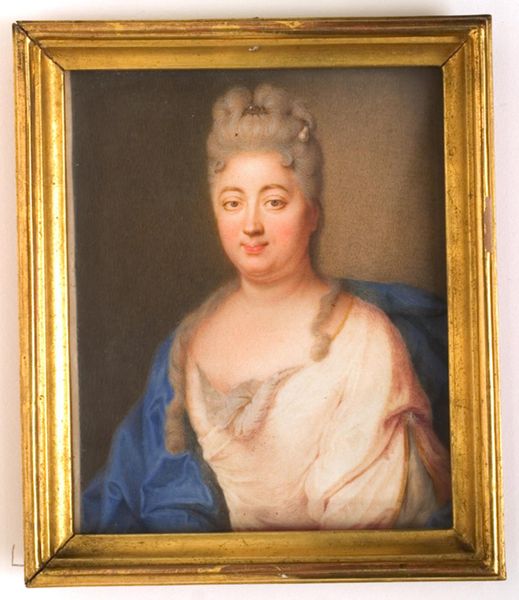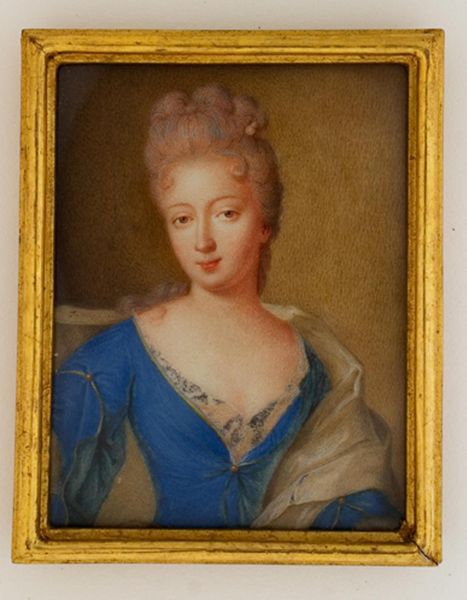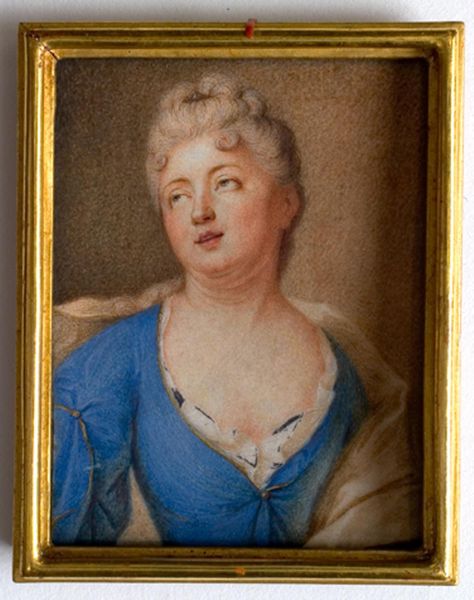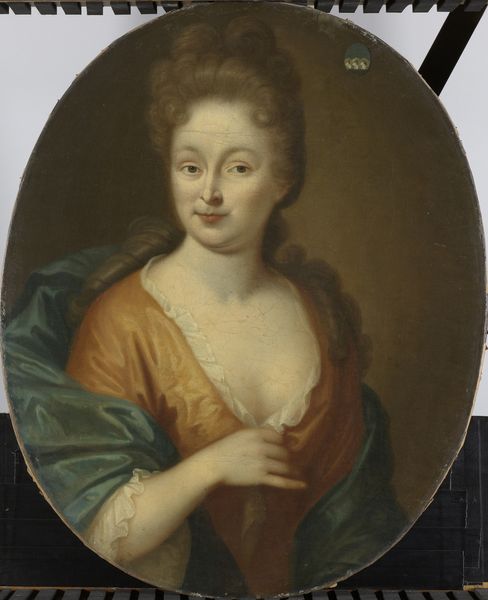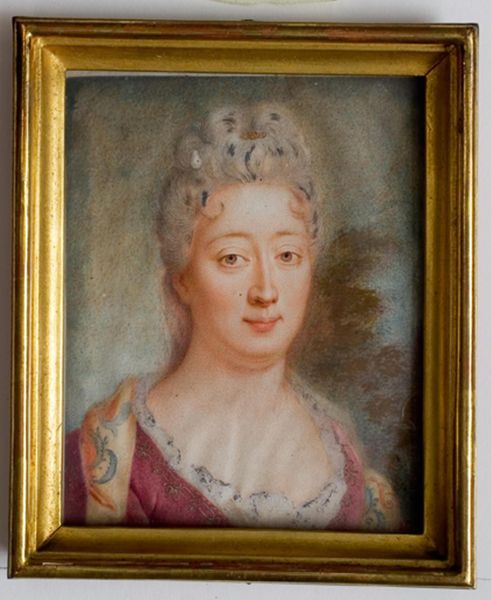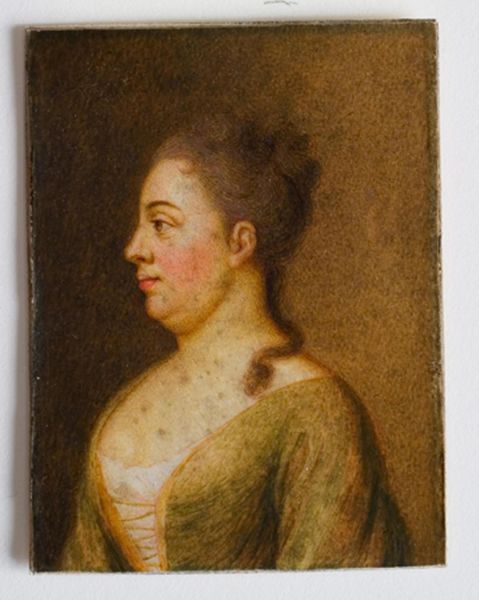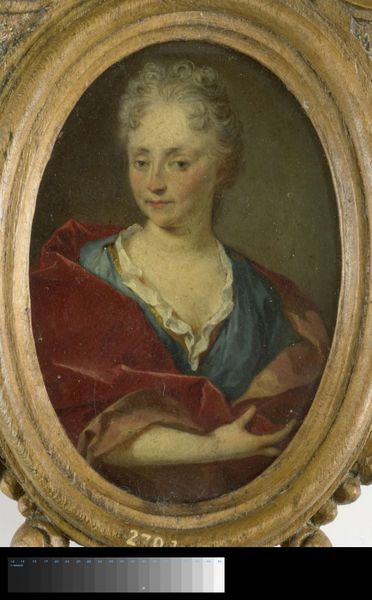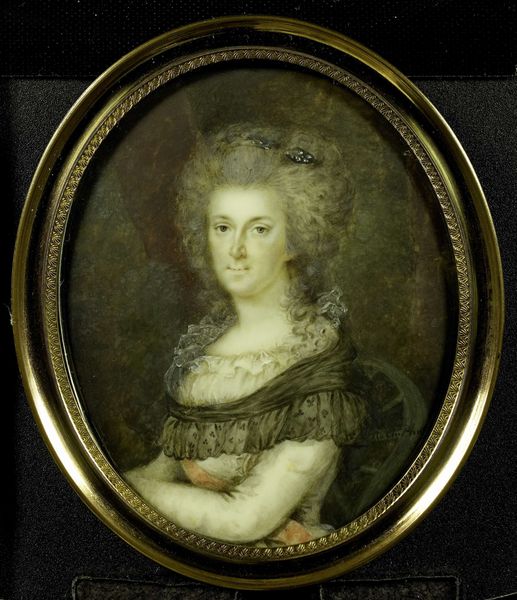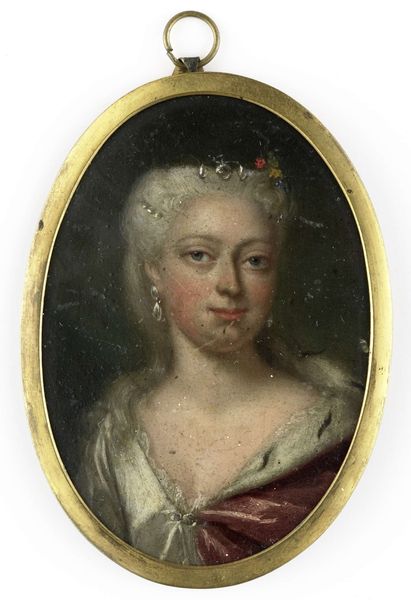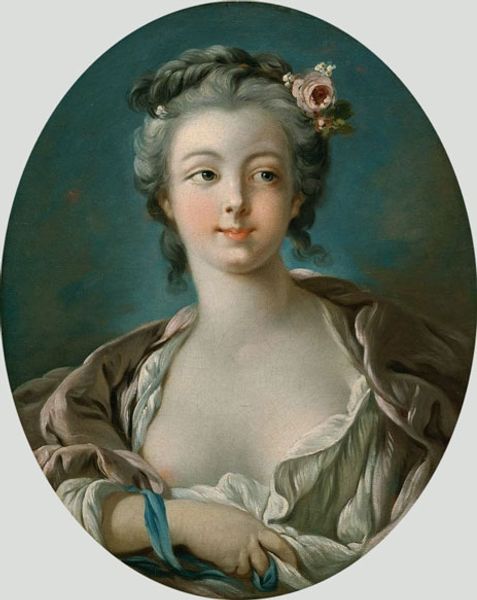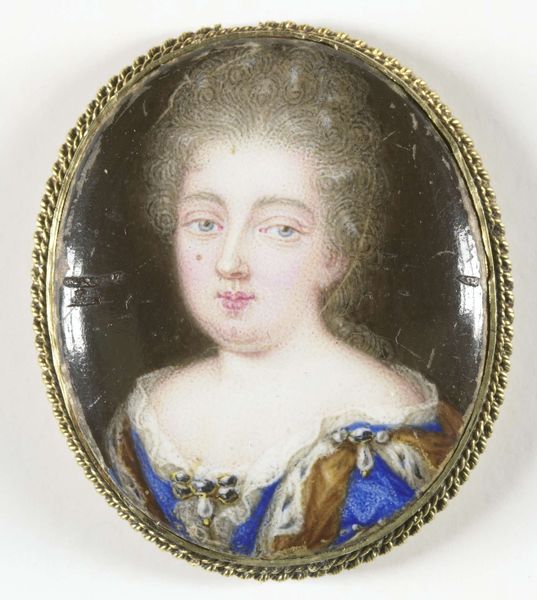
painting, watercolor
#
portrait
#
painting
#
oil painting
#
watercolor
#
portrait drawing
#
portrait art
#
miniature
#
rococo
Dimensions: 10 cm (height) x 8 cm (width) (Netto)
Curator: Standing before us is a rather captivating miniature portrait. Created in 1747 by David Gardelle, it is called "Dameportræt" and is currently housed here at the SMK, the Statens Museum for Kunst. Editor: My first impression is one of restrained elegance. The muted tones and the woman's almost melancholic gaze create a quiet, intimate atmosphere. The ruffle frames her face quite nicely. Curator: It's the rococo style shining through! And miniatures like this held particular importance at that time. Their production relied on specialized labor. Artists needed incredibly fine brushes, ground pigments mixed with gum arabic, and a steady hand to capture the likenesses on ivory or vellum. Think of the guilds controlling production, ensuring quality, and shaping the market for these luxury items! Editor: The ruffle is definitely important! Visually, it pulls the eye directly to her face. Ruffs often signified wealth and status, requiring elaborate craftsmanship and costly materials like fine linen and lace. Here, it gives the subject a slightly distant, almost regal air. Her expression could be a symbol of pensive self-reflection so common during the Enlightenment. Curator: Precisely! The very act of commissioning and owning such a portrait was a signifier of status. It highlights the patron's wealth and access to resources. You can examine the brushstrokes to assess how quickly they needed to be produced, where there was less material to be spread! Editor: Do you think the portrait could speak to broader ideals of feminine virtue prevalent at the time? Subdued colors, modest demeanor… even the simplified backdrop emphasizes interiority, hinting at qualities like virtue and introspection. Curator: Absolutely, yet that modesty, like all of these fine material elements of production, had an extremely high market value. It shows not just virtue but a consumerist excess enabled by access to workshops and skilled producers. Editor: Food for thought. Seeing it through the lens of artistic practice really enriches our understanding. Curator: It gives an invaluable context, and focusing on materiality prevents us from ascribing simple and timeless truths about identity based only on imagery. Editor: Yes. Understanding symbols certainly enhances interpretation, though! Both offer vital, distinct ways into art history.
Comments
No comments
Be the first to comment and join the conversation on the ultimate creative platform.
